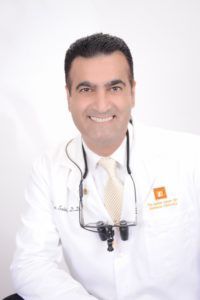First and foremost, everyone needs to wear it. It doesn’t matter if you’re fair-skinned or dark-skinned — the risk of skin cancer is there no matter what.
Recently, the Center for Disease Control and Prevention reported the incidence of melanoma in both men and women “has risen two percent every year from 2000 to 2009.”
What changes have been made to sunscreen labels?
In order to safely protect yourself, you should be aware of the three big changes that have been made to sunscreen labels:
- Sunscreen labeled ‘Broad-spectrum’ means it protects you from both UVA and UVB sun rays. Not all sunscreens have this label, but it’s something you want to have.
- Sunscreens used to be labeled ‘water-proof’ or ‘water-resistant.’ Now only ‘water-resistant’ will be used.
- Previously, sunscreens had an SPF ranging from 2 to 70. In the future, sunscreens with an SPF of over 50 will be labeled 50+.
What is the significance of these changes?
Let’s start with the first label change. Previously, sunscreens may have only protected you from one type of sunray. Ultraviolet A causes the type of damage that leads to aging skin and cancer, where Ultraviolet B causes redness and sunburn. Good sunscreen needs to protect you from both, and that’s how the label ‘broad-spectrum’ will answer that question.
Some of the top safest sunscreens on the market.
The second label change to sunscreen clarifies the difference between water-resistant and water-proof. To eliminate this, the label ‘water-proof’ will no longer be used, as it causes people to believe they are impervious to the sun when they really should be reapplying after swimming and sweating.
The third label change addresses the confusion over SPF. The main reason behind this change is that the FDA doesn’t have statistics showing “an SPF higher than 50 offers greater protection.” Also, doctors believe people who buy sunscreen with an SPF over 50 get a false sense of security and apply less often. The Environmental Working Group (EWG) suggests purchasing a sunscreen with an SPF between 15 and 50, though some dermatologists like Dr. Tina Venetos at Northwestern Lake Forest Hospital will still tell you to “choose a sunscreen with the SPF above 50, and always reapply after two hours or after swimming or sweating.”
If you need help choosing a sunscreen, checking out the EWG’s 2013 Sunscreen Guide. Any sunscreen on this list must be broad-spectrum, not have an SPF over 50, not be a spray, not be combined with bug-repellent, and must be free of damaging chemicals like oxybenzone and retinyl palmitate.

Dr. Sam Sadati is the owner and practitioner of The Sadati Center of Aesthetic Dentistry in West Palm Beach and a leader in the world of cosmetic dentistry and smile design. He is the only accredited cosmetic dentist in all of South Florida and is one of only forty dentists in the world to receive an Accredited Fellow honor from the American Academy of Cosmetic Dentistry (AACD). Apart from creating beautiful smiles, Dr. Sadati enjoys photography, travel, and the opportunity to tell a good joke. If you have a question or comment, dental-related or otherwise, connect with us on Facebook or Twitter. We always reply to our fans and followers!
Powered by Infinity Dental Web.


